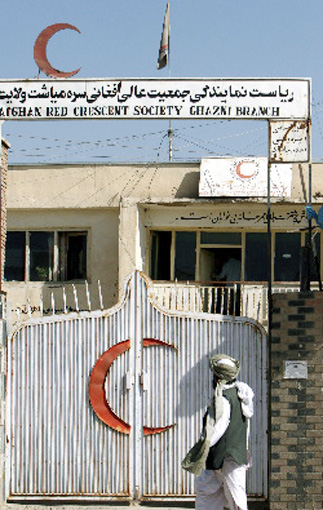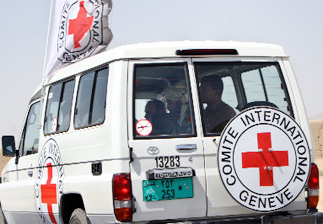These are the emblems of the world’s largest humanitarian movement.

The Afghan Red Crescent Society of Ghazni Province, Afghanistan.
What are the International Red Cross and the Red Crescent Society?
The International Red Cross and Red Crescent Movement is the world’s largest humanitarian network. It emerged from work inspired by the Swiss businessman and social activist Henri Dunant. While traveling in 1859, he witnessed the horrors of the Battle of Solferino during the bloody campaign to unify Italy.
He published a book, which recorded his memories and observations of the war’s carnage, and began advocating for the creation of a neutral organization to care for war’s casualties, which inspired the creation of what would become the International Committee of the Red Cross in 1863. The 1864 Geneva Convention, which began to set forth the principles of international humanitarian law, was based on Dunant’s ideas; in 1901 he was awarded the first Nobel Peace Prize, together with peace and arbitration advocate Frederic Passy.
The movement is composed of several organizations, including the Geneva-based International Committee of the Red Cross and the International Federation of Red Cross and Red Crescent Societies. In addition, there are National Red Cross and Red Crescent societies in nearly every country in the world. To this day, the ICRC has remained an independent Swiss organization. The ICRC recognizes 185 national Red Cross societies.
The Red Cross and the Red Crescent organizations are legally independent from each other, but united within the movement upholding common basic principles. The International Red Cross and Red Crescent Movement aims to protect human life and health, ensuring respect for people by preventing and alleviating human suffering without any discrimination based on nationality, race, gender, religion, class or political opinion. The movement upholds seven principles ― humanity, impartiality, neutrality, independence, voluntary service, unity and universality.
The International Federation of Red Cross and Red Crescent Societies was founded in 1919 and is based in Geneva. The federation coordinates activities between the National Societies of the Red Cross and the Red Crescent.

A vehicle of the International Committee of the Red Cross transports Taliban representatives to a negotiation venue on Aug. 28. [AP]
The Red Cross emblem was officially approved in 1864, one year after the International Committee of the Red Cross was founded. The Red Cross was intended to be universal and easily recognized during armed conflicts. It is not a religious symbol; the emblem is based on the national flag of Switzerland, a historically neutral nation, with colors reversed.
In the war between Russia and Turkey from 1876 to 1878, the Ottoman Empire declared that it would use the Red Crescent to mark its own ambulances while respecting the Red Cross sign protecting enemy ambulances. The Ottoman Empire had recognized the first Geneva Convention, but the decision apparently came from religious reasons: the Red Cross reminded Muslims of the Crusades. This led to the creation of the Red Crescent emblem. The symbol was officially approved by the federation in 1929 after lengthy discussion. So far, 25 Islamic states use the symbol to represent their Red Crescent societies.
Afghanistan, where the kidnapping of Koreans took place, is an Islamic nation, thus the country has a Red Crescent Society.
The crescent is traditionally associated with Islam, and the Red Crescent symbol was created by reversing the color of the Ottoman flag, which was later adapted into modern-day Turkey’s national flag.
Despite the movement’s principle of strict neutrality, the emblems are sometimes perceived as having religious, cultural or political symbolism. In an effort to end such debate, the Red Crystal was created in 2005 as a third emblem for use in the movement. The new symbol was designed to be easily recognizable and more universally acceptable. The new emblem can be used alone, or with the Red Cross or Red Crescent symbols. No country or national society is required to change its emblem, and none are obliged to use the new one. The federation requires all members to respect it in the same manner as the other emblems. Israel’s national relief agency has adopted the Red Crystal. Eritrea also plans to use the new symbol.
By Ser Myo-ja Staff Writer [myoja@joongang.co.kr]










with the Korea JoongAng Daily
To write comments, please log in to one of the accounts.
Standards Board Policy (0/250자)